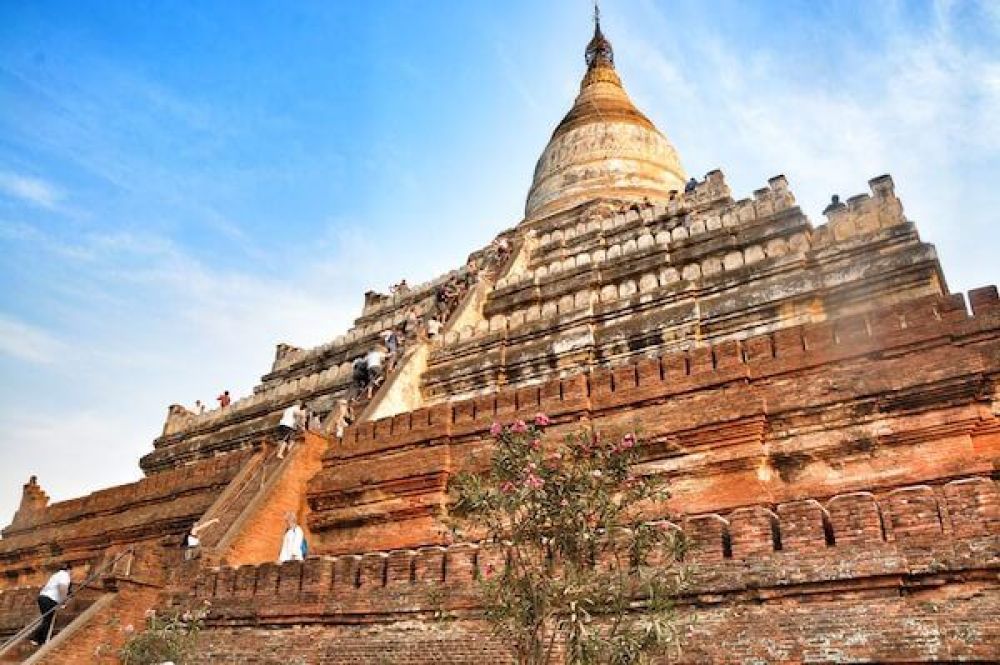

The ancient city of Bagan, located in the Mandalay Region of Myanmar, is renowned for its archaeological significance and its contribution to the history of tourism in the region. Among its thousands of temples and pagodas, the Shwesandaw Pagoda stands out as a prominent historical and religious site, attracting pilgrims and tourists alike.
Constructed in 1057 by King Anawrahta, the Pagoda was built to house sacred hairs of Gautama Buddha. Over the centuries, Bagan has been hit by many earthquakes, but the Shwesandaw Pagoda has withstood these natural disasters, retaining its grandeur and spiritual significance. It is one of the taller monuments in the city, which makes it a popular spot for panoramic vistas of the Bagan plain, especially at sunrise and sunset.
Tourism in Bagan, and by extension to the Shwesandaw Pagoda, dates back to the early 1900s when the area was under British colonial rule. However, it wasn’t until the late 20th century that it started to emerge as a key tourist destination. With Myanmar’s political situation stabilizing and entry restrictions easing in the 1990s, Bagan began to witness a steady increase in international visitors.
Recognizing the potential of Bagan as a tourist destination, the government of Myanmar made concerted efforts to develop the infrastructure around the region with improved transportation, accommodations, and visitor facilities. The Shwesandaw Pagoda, in particular, became one of the highlights for visitors seeking both spiritual enrichment and historical exploration. Visitors often climb the terraces of this imposing stupa to get a breathtaking view of the surrounding temples dotting the landscape.
Recent trends in tourism at Shwesandaw Pagoda and Bagan reflect a rising interest in cultural and responsible tourism. More tourists are seeking authentic experiences that include interaction with local communities and learning about the region's history, culture, and traditions. Additionally, there has been a surge in eco-friendly practices and sustainability in tourism offerings to minimize the environmental impact of tourism.
The use of hot air balloons has also become a popular trend, providing an unrivaled opportunity to witness the scale of Bagan’s architectural wonders from above, with the Shwesandaw Pagoda often featuring as a highlight in the stunning skyline.
The Myanmar government and international organizations such as UNESCO have undertaken various preservation projects to maintain the integrity of Bagan’s monuments and to ensure that tourism does not detract from the site’s historical value. Efforts such as restricting climbing on certain pagodas for preservation and safety reasons are examples of measures implemented to protect these invaluable sites.
In conclusion, the Shwesandaw Pagoda continues to play a pivotal role in the tourism history of Bagan, Myanmar. As tourism trends evolve towards more sustainable and culturally-focused travels, this majestic pagoda stands as a testament to Bagan's historical grandeur and the timeless allure of Myanmar's cultural heritage.